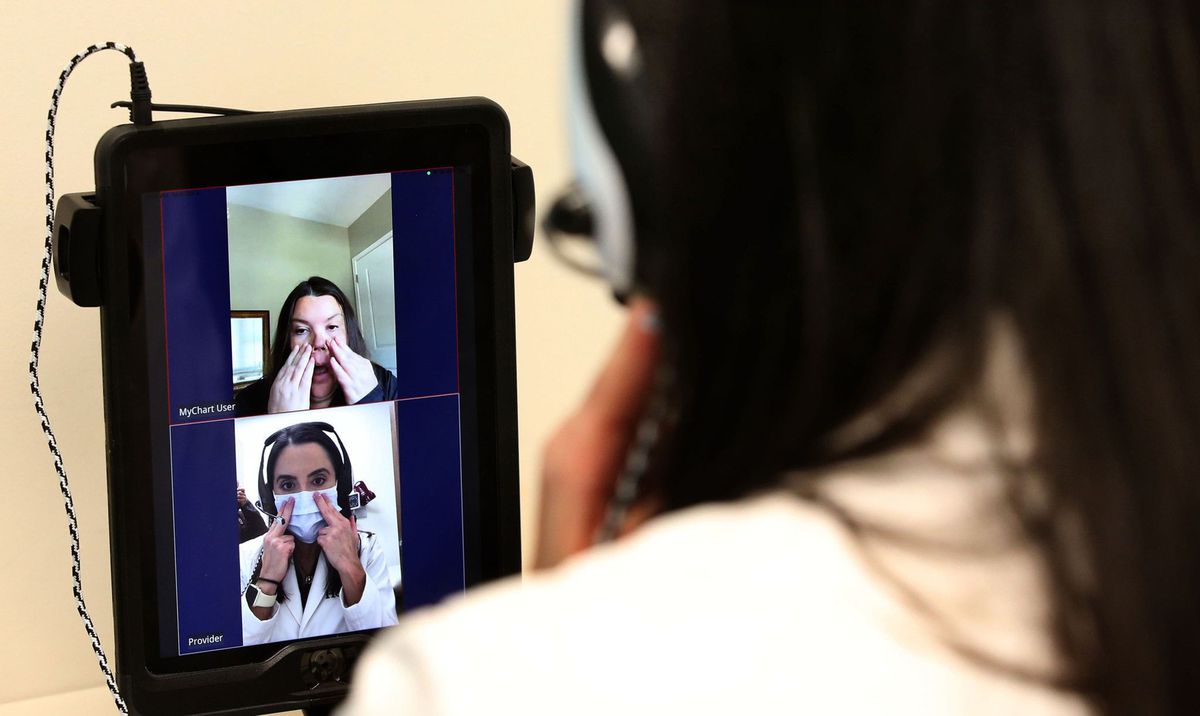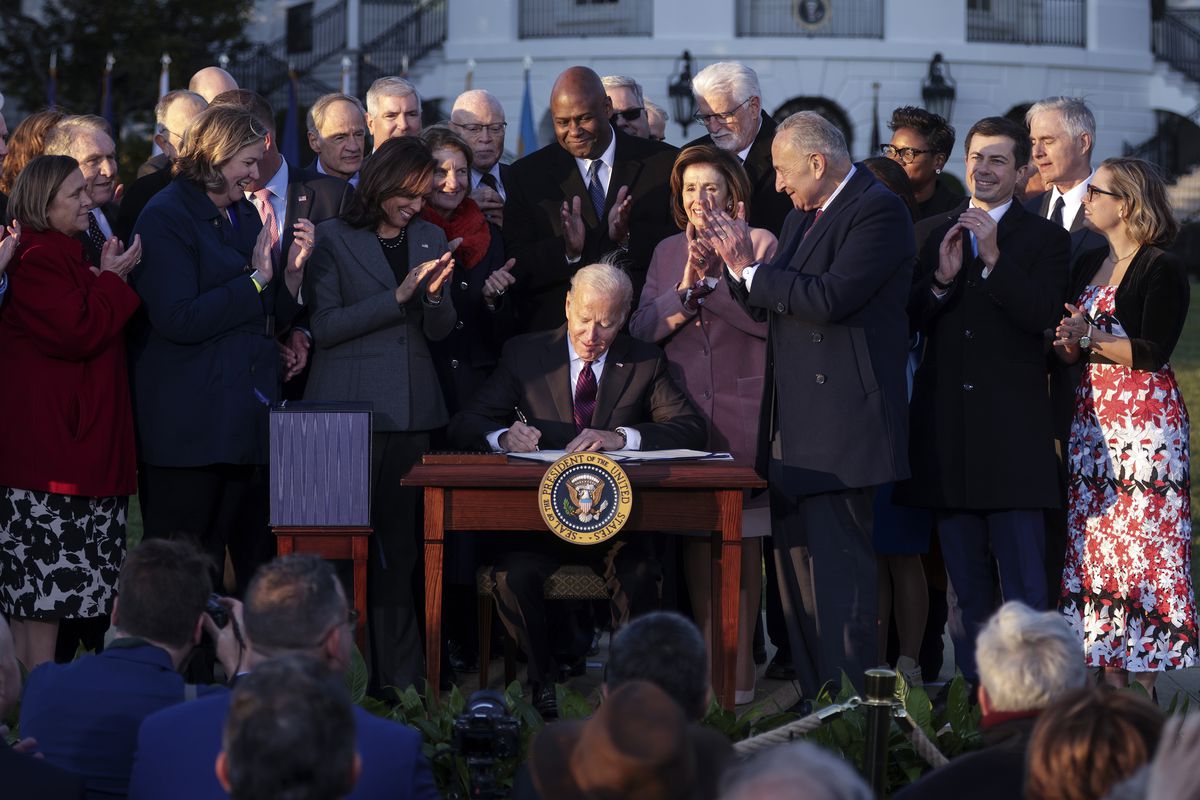Two years into the pandemic, researchers are still trying to understand what makes some people more likely than others to die from Covid-19. Although we know some of the risk factors — like age and underlying disease — others are less obvious. Identifying them could ease our current pain, protect communities from future epidemics, and point us toward some of the societal fractures we should most urgently try to mend.
One of the more surprising answers to this question is one that appears to have a relatively straightforward solution: internet access.
This March, researchers at the University of Chicago published a study in the journal JAMA Network Open that showed one of the factors most consistently associated with a high risk of death due to Covid-19 in the US was the lack of internet access, whether broadband, dial-up, or cellular. This was regardless of other demographic risk factors like socioeconomic status, education, age, disability, rent burden, health insurance coverage, or immigration status.
The study authors estimated that for every additional 1 percent of residents in a county who have internet access, between 2.4 and six deaths per 100,000 people could be prevented, depending on the makeup of the region.
The findings held more surprises. The trend held true not just in rural areas with sparse internet access, but also in urban areas, where most homes can be wired for broadband internet. That is, people who could get internet access in cities but either don’t or can’t are also at increased risk of dying from Covid-19.
“We believe this finding suggests that more awareness is needed,” the study authors wrote in the paper. “Populations with limited internet access remain understudied and are often excluded in pandemic research.”
Still, questions remain. Why does internet access seem to be protective? And would increasing it yield meaningful improvements in public health?
The answers to those questions matter because while the American marketplace has generally treated internet access as a luxury, the Covid-19 pandemic has revealed that the ability to get online might be a matter of life or death.
Post Contents
America’s internet inequality, explained
Internet access has been inequitable for almost as long as there’s been an internet.
In 2000, when the Pew Research Center first began gathering data on Americans’ internet use, its researchers found large gaps: older Americans, low-income people, minorities, people with less education, and those who live in rural areas were less likely to be online.
While some of those gaps have since narrowed, most of them stubbornly remain. More than a quarter of Americans still don’t have home broadband internet, and the proportion without access is twice as high for those without any college education and those who earn less than $30,000 a year. Only 63 percent of rural homes have broadband access, as do about half of those living on tribal lands — even if they have a computer.
These inequities were not created by chance. In the US, private internet service providers developed the infrastructure for broadband internet access where it was profitable. As a consequence, many of the country’s most marginalized communities have the fewest, most expensive, and lowest-quality choices when it comes to an internet service provider.
As those access gaps persisted over the years, more and more health services came online. That left those without access unable to use telemedicine, or even easily look up information about health conditions. Over the last few years, researchers have started to see internet access, and in particular high-speed broadband, as a critical component of health — something vital for connecting people not only with health care, but also with food, housing, education, and income, all of which are considered social determinants of health.
Then, as Covid-19 pushed routine health care provider visits into the telehealth space, people without internet access — many of them already medically underserved — found health care even harder to access. Home broadband drew a sharper line than ever before between haves and have-nots; access to internet bandwidth suddenly determined access to educational instruction, economic stability, food pantry sign-ups, vaccine availability and safety information, human contact, and so many other resources.

Before the pandemic, broadband internet access was only occasionally described as a social determinant of health, but over the past two years, its centrality has crystallized. “Broadband internet access acts as a gateway to information and services,” said Natalie Benda, a health care informatics researcher who co-authored an editorial on the subject in the American Journal of Public Health.
Having broadband internet access means having access to education and financial stability, which on their own contribute to our well-being. The connections are so strong, Benda said, that the Federal Communications Commission is now framing broadband internet access as a “super” determinant of health.
There’s a huge amount of observational data showing broadband internet access tracks with other factors that predict health, like income, race, and education. However, there is almost no experimental data linking internet access with health outcomes themselves.
The pandemic provided an opportunity to accelerate our understanding of just how internet access is related to health because it exacerbated many of the existing inequalities underlying health disparities.
Linking internet access to Covid-19 mortality
Prior to the pandemic, the investigators might not have thought to include internet access as a variable, said Qinyun Lin, one of the study’s co-authors. However, another study had linked home broadband internet to Chicago-area Covid-19 mortality; that finding, combined with the team’s own pandemic experiences of retreating to life online, led them to consider internet access as essential in the Covid-19 context. The authors drew on census data on households without access to any form of internet, whether broadband, dial-up, satellite, or cellular. (Note: The study does not directly compare the impact of having broadband versus dial-up or any other category.)
In Lin’s study, internet access was the only factor associated with higher mortality rates in rural, urban, and suburban areas (the study also included measures of socioeconomic status, education, age, and other demographic risk factors). The effect was strong: In rural areas, a 1 percent decrease in a county’s internet access was associated with 2.4 deaths per 100,000 people. But the effect was even stronger in urban areas, where the same difference in access was associated with nearly six deaths per 100,000 people.
The investigators weren’t surprised to find that low internet access was associated with high death rates, said study coordinator and co-author Susan Paykin. But they were surprised by how strong the association was, and surprised by its presence in both rural and urban areas.
None of the other demographic variables the team examined — including socioeconomic status — were significant across all three types of communities, said Paykin. There’s a lot of attention and research put into broadband gaps in rural areas, “but I think that misses a lot of what’s clearly going on in suburban and urban communities,” she said. That means lack of internet access isn’t just a rural infrastructure problem. It’s likely a problem of affordability in cities as well.
Questions remain about the why of it all
Internet access doesn’t boost your immune system or filter your air — so what’s the mechanism explaining the robust relationship between low digital connectivity and high Covid-19 death rates?
The absence of internet access in a household can signify a variety of other factors that are known to increase the risk of dying from Covid-19: old age, housing problems, or difficulty accessing quality health care. But Lin’s study accounted for these characteristics in the analysis, suggesting the lack of internet access was the real source of risk.
Lin hypothesizes that it’s all about lacking information. “If they have limited access to the internet, they rely more on their personal network or their local network to get Covid-19-related information,” she said. That may lead to being influenced by low-quality information sowing distrust in vaccines, for example. But her study wasn’t designed to show why Covid-19 deaths were more common in counties where internet access was more scarce, she says, and more research is needed to answer this question.
New funding for broadband expansion will solve some access problems but not the root cause of them
The good news here is that internet access is a problem the US government has actually allocated money to solve.
In November, Congress passed an infrastructure bill that included $65 billion in funding for broadband internet expansion. Two-thirds of the funding will support the creation of infrastructure, largely in rural parts of each state, and an additional large chunk will pay for $30 monthly subsidies to help low-income households pay for internet access.

President Joe Biden signs the Infrastructure Investment and Jobs Act on the South Lawn of the White House on November 15. The bill included funds for increasing rural broadband access.
Alex Wong/Getty Images
Smaller amounts have been earmarked for programs to teach new users the tech skills they need to use the internet, programs to expand access in tribal communities, and other initiatives.
That means a lot of the new money “gets funneled toward rural areas without access to what we consider basic broadband today,” said Ry Marcattilio-McCracken, a senior researcher with the Institute for Local Self-Reliance’s Community Broadband Networks Initiative.
In many ways, that’s a good thing: Because rural communities have not been profitable areas of development for the telecommunications monopolies that serve them, infrastructure to support rural access to even the lowest-speed broadband internet has been woefully underdeveloped.
But the bill doesn’t do as much to address disparities in areas that have good infrastructure but low affordability, said Marcattilio-McCracken. Residents of many cities cannot afford an $80 monthly bill for broadband internet, even with the $30 subsidies the new funding would provide. And because the bill disincentivizes competition, urban residents will not have new internet service providers to choose from any time soon.
One of the most promising solutions to urban internet insecurity — and one the Biden administration initially wrote into the bill — is the creation of cooperative community networks. These municipally run internet service providers are able to provide higher download speeds, lower prices, and better service to city residents — plus, they are relatively uncomplicated to set up, and as easy to sign up for as, say, city-run electrical utilities, Marcattilio-McCracken said.
They do require startup funding, he said, but ultimately, these providers prioritize access over profit. “They’ve got a whole different set of motives in building an operating infrastructure, and it means building more resilient communities,” Marcattilio-McCracken said.
“Broadband internet access should be a public utility,” Benda said, especially considering the research linking access to health. It’s a need, not a privilege; that means making it as accessible and adjustable as water or electricity use, she said.
Will expanding access improve health? It’s an experiment worth conducting.
Researchers know the lack of internet access is associated with poor health outcomes, but one thing still remains to be seen: Does expanding access work as an intervention to improve health?
In the coming years, the expansion of broadband will at least provide a natural experiment to test this question. Regardless, the pandemic has shown that increasing access is essential for so many reasons.
Improving internet access now would have positive effects that last beyond the pandemic, Paykin said. Telehealth and online learning for children and adults are likely here to stay. “This almost surely won’t be our last pandemic,” she said, nor our last public health emergency. Whatever challenges may come, increased broadband internet access seems likely to help people through them.